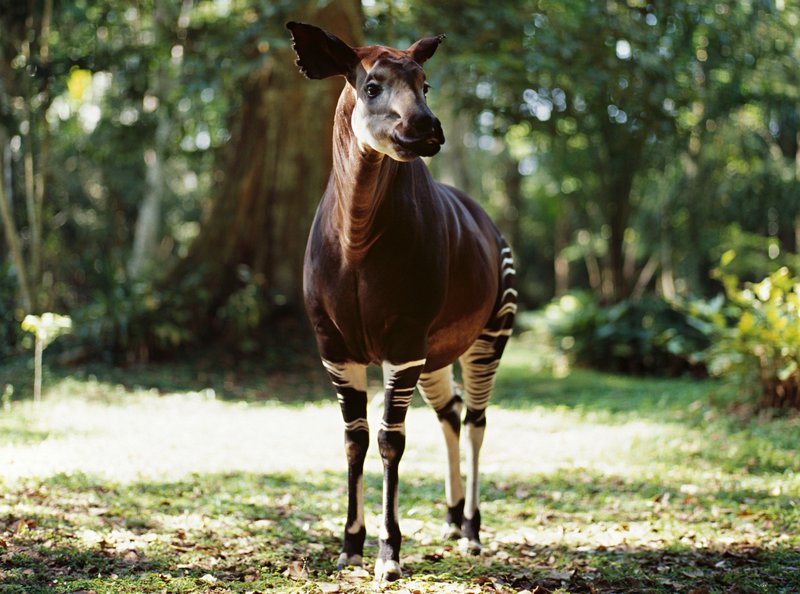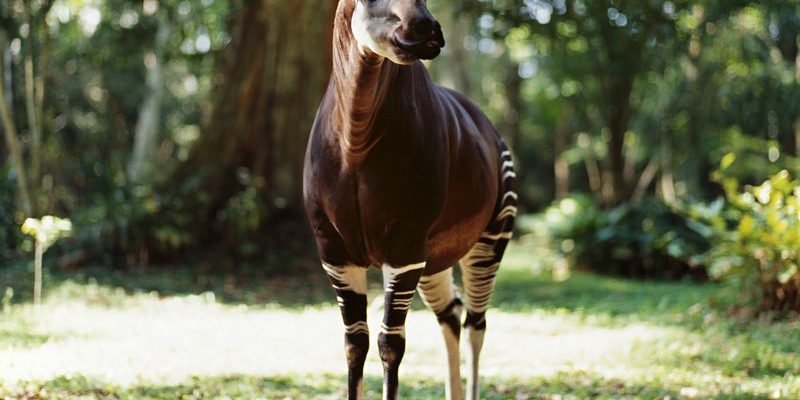
So, is the okapi endangered? The short answer is yes. The International Union for Conservation of Nature (IUCN) lists it as “Endangered” due to habitat loss, poaching, and civil unrest in its home region. But let’s take a deeper look into why the okapi is in trouble, what’s being done to help, and how we can all play a part in its conservation.
Understanding the Okapi’s Habitat
The okapi’s home is primarily in the Ituri Rainforest, which spans a vast area in northeastern Congo. This environment is rich in biodiversity, offering a range of plants and trees that sustain not just the okapi but countless other species. Picture this lush forest: towering trees, vibrant vegetation, and a symphony of sounds from wildlife. Unfortunately, this serene setting is increasingly threatened.
Deforestation is a major concern. As people clear the land for agriculture and logging, the okapi loses the dense foliage it needs for shelter and food. The loss of habitat not only reduces their living space but also puts stress on their populations. Without enough food and safe areas to thrive, these remarkable animals cannot reproduce successfully.
Threats to the Okapi’s Habitat
Several factors contribute to the destruction of the okapi’s habitat:
- Logging: Legal and illegal logging activities remove crucial trees.
- Agricultural expansion: Farmers are clearing forests to grow crops.
- Mining: Extractive industries are encroaching on okapi territories.
These threats are compounded by political instability in the region, which makes conservation efforts challenging.
The Impact of Poaching
Poaching is another significant threat to the okapi population. These animals are hunted for their meat and skin, and their low population numbers make them particularly vulnerable. You might wonder how poaching still occurs despite laws protecting the okapi. The truth is, enforcement in remote areas can be nearly impossible.
Let’s think about it this way: if you’re in a busy city, you can see police patrolling the streets. Now imagine a vast, dense forest where the only sounds are rustling leaves and distant animal calls. It’s much harder to monitor. Poachers can hide easily, and tracking their actions is a considerable challenge.
Conservation Efforts in Play
Conserving the okapi requires a multifaceted approach. Organizations like the Okapi Conservation Project are working tirelessly in the field. They focus on:
- Community education: Teaching locals about the importance of the okapi and its habitat.
- Anti-poaching patrols: Setting up teams to protect okapis from poachers.
- Habitat restoration: Replanting trees and restoring the rainforest to its former glory.
These efforts are essential, but they also need support—and that’s where we can step in.
What Can You Do to Help?
You might be asking yourself, “What can I do to make a difference from so far away?” Here’s the thing: every little effort counts.
First off, consider supporting reputable conservation organizations that focus on the okapi. Your donations make a real impact, funding anti-poaching efforts and habitat restoration projects. Moreover, spreading awareness is crucial. By talking about the okapi and sharing information online, you can help educate others about its plight.
Adopting Sustainable Practices
Another way to help is by adopting sustainable practices in your own life. This could be as simple as:
- Reducing plastic use: Opt for reusable bags and containers.
- Choosing sustainable products: Look for items certified by environmental organizations.
- Supporting eco-friendly brands: Invest in companies that prioritize conservation.
By making these choices, you’re contributing to a healthier planet, which indirectly supports species like the okapi.
The Role of Technology in Conservation
Technology is playing a vital role in modern conservation efforts. The use of drones, camera traps, and even apps can help monitor wildlife and track poachers more effectively. For example, drones can survey large areas of land, giving conservationists a bird’s-eye view of the landscape and helping them assess changes in the environment over time.
Camera traps, which are motion-activated, allow scientists to gather data on animal behavior and population numbers. They can provide insights that were nearly impossible to obtain before. Imagine setting up a hidden camera in the rainforest and discovering the bustling life of okapis through photos! These innovative solutions are paving the way for more effective conservation strategies.
Community Engagement Through Technology
Additionally, community members can use mobile applications to report poaching activities or share information about wildlife sightings. This grassroots involvement is crucial, as local people are often the best stewards of their environment. By harnessing technology, we can empower communities to take an active role in protecting the okapi.
Global Perspectives on Endangered Species
The situation of the okapi mirrors broader trends in global wildlife conservation. Around the world, thousands of species face similar threats due to habitat destruction, climate change, and human activities. The okapi serves as a symbol of endangered species and reminds us of the urgency behind conservation efforts.
Ultimately, the fate of the okapi reflects our commitment to protecting the world’s biodiversity. We can draw parallels to other endangered species, like the Sumatran tiger or black rhinos, facing similar struggles. Understanding these connections helps us advocate for comprehensive conservation policies.
Lessons from the Okapi’s Journey
The story of the okapi teaches us valuable lessons about the importance of stewardship. Each one of us has a role to play in ensuring that future generations can marvel at these unique creatures. By learning about their plight and championing their cause, we not only help the okapi but contribute to a healthier planet as a whole.
So, is the okapi endangered? Yes, there’s no denying it. However, there’s also hope. Through awareness, education, and action, we can work together to improve their situation. As we sip our coffee and reflect on the beauty of the okapi, let’s remember that every effort counts. Whether it’s supporting conservation groups, spreading the word, or simply practicing sustainability in our daily lives, we have the power to make a difference.
In the end, the story of the okapi is not just about conservation—it’s about connection. It’s about how we, as global citizens, choose to care for the world around us. So let’s take that step, shall we?

